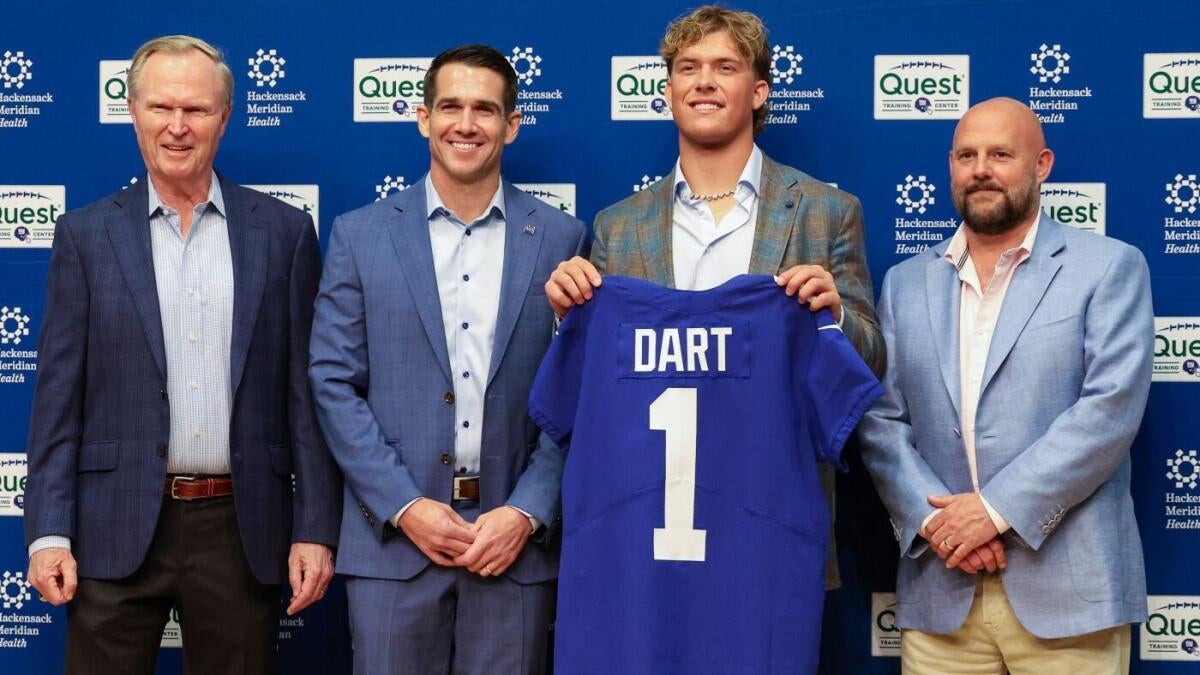“`markdown
The Giants’ Quarterback Blueprint: Blending Present Success with Future Promise
The New York Giants’ quarterback strategy for the 2025 season is a masterclass in balancing immediate competitiveness with long-term vision. By signing veteran Russell Wilson and drafting rookie Jaxson Dart, the franchise has crafted a dual-track approach that addresses both short-term performance and future development. This move isn’t just about filling a position—it’s about reshaping the team’s identity.
Russell Wilson: The Bridge to Relevance
A Veteran with Something to Prove
Wilson’s one-year, incentive-laden deal (worth up to $21 million, with $10.5 million guaranteed) signals a low-risk, high-reward bet for the Giants. At 36, Wilson isn’t just a stopgap; he’s a former Super Bowl winner with a chip on his shoulder after a tumultuous stint in Denver. His leadership and ability to extend plays with his legs make him an ideal fit for Brian Daboll’s creative offensive system.
Stability Over Star Power
The Giants aren’t asking Wilson to carry the team single-handedly. Instead, his role is to stabilize an offense that has struggled with consistency. His presence allows the Giants to compete in a loaded NFC East while buying time for Dart’s development. As GM Joe Schoen noted, “Russell gives us a chance to win now while we build for tomorrow.”
Jaxson Dart: The Patient Protégé
From Ole Miss to the Big Apple
Dart, selected 25th overall, arrives with impressive college credentials: 8,700+ passing yards, 63 touchdowns, and a knack for improvisation. His arm talent and mobility align with modern NFL quarterback trends, but his rawness—particularly in reading complex defenses—makes him a project.
The Power of a “Redshirt” Year
History shows that rookie QBs often thrive after a year of observation (see Patrick Mahomes, Jordan Love). The Giants are banking on this model. By sitting behind Wilson, Dart can refine his footwork, absorb playbook nuances, and avoid the confidence-shaking mistakes that plague young starters. Schoen’s emphasis on patience suggests Dart won’t see the field unless injuries or drastic circumstances intervene.
The Supporting Cast: Depth as a Weapon
Jameis Winston’s Unsung Role
Winston, the third QB on the roster, is more than a clipboard holder. His experience as a former No. 1 pick and 5,000-yard passer provides Dart with another mentor. Winston’s gunslinger mentality contrasts with Wilson’s calculated style, offering Dart a well-rounded perspective on NFL quarterbacking.
A Competitive Ecosystem
The Giants’ QB room is designed to foster growth through competition. Wilson’s job is secure, but the presence of Dart and Winston ensures no complacency. This environment mirrors successful setups like the 2017 Chiefs (Alex Smith/Mahomes) and the 2020 Packers (Aaron Rodgers/Love), where competition elevated everyone.
The Road Ahead: Contention and Development
2025: Playoffs or Bust?
With Wilson under center, the Giants aim to return to postseason contention. Their success hinges on offensive line improvements and health, but Wilson’s ability to elevate supporting casts (see his Seattle years) offers hope. A playoff berth would validate this transitional strategy.
2026 and Beyond: The Dart Era
If all goes according to plan, Dart takes the reins in 2026 with a year of NFL seasoning and a tailored offense. The Giants’ willingness to delay gratification reflects a rare discipline in a win-now league. As Daboll put it: “Great franchises are built over years, not weeks.”
Conclusion: A Template for Sustainable Success
The Giants’ quarterback strategy is a lesson in restraint and foresight. By pairing Wilson’s win-now prowess with Dart’s long-term upside, they’ve created a blueprint that avoids the pitfalls of desperation (e.g., overpaying for aging stars) or recklessness (throwing a rookie into the fire). Whether this pays off hinges on execution, but one thing is clear: New York isn’t just playing for 2025—it’s playing chess while others play checkers.
“`











